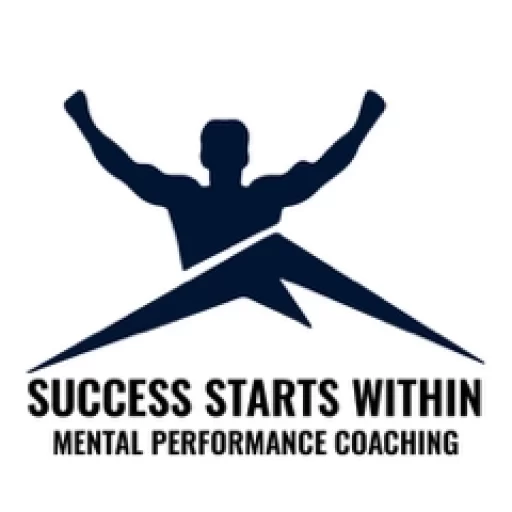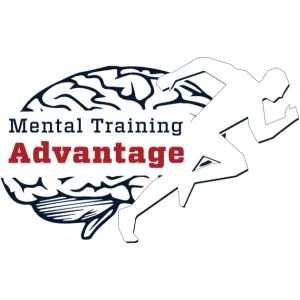Have you ever performed effortlessly? Where everything you did felt right, and more than that, it felt easy?
If so, you’ve experienced the flow state. A place where you and your sport become one. Where performing can feel as natural as taking a breath.
It’s an incredible feeling and state to be in when you perform. Not to mention how good you play when you’re in flow.
But one of the more frustrating things about the flow state is when it’s not there. When you’ve experienced it once and then it disappears. Each day you show up wondering if today will be the lucky day it returns.
Only to find yourself back to performing how you normally do. Not that there’s anything wrong with that, it’s just, it doesn’t feel the same as when you’re in flow.
I get it. As a mental performance coach, I’ve heard athletes describe the feeling of performing in the flow, and I’ve heard their frustration when they can’t get it back. And as a former baseball player, I’ve experienced both sides myself.
So, what I want to do with this article is show you a sport psychology strategy you can use to achieve the flow state in sports.
But first, what is flow?
What is Flow?
Flow is defined as being completely absorbed in what you’re doing. That’s why in the introduction I used the phrase, you and your sport become one. When you’re in the flow state, there is no longer a clear line in your mind between you and what you’re doing.
Now, what does it really mean to be absorbed in what you’re doing? How can you feel like you and what you’re doing are one? Well, what we’re really talking about are your thoughts and emotions.
Let me use an example of a long-distance runner. Throughout the race, her mind has been full of many different thoughts. Some have been helpful, and some have been hurtful. Some have involved how tired she is and others have been about how badly she wants to win.
But the thoughts are there, pulling at her attention. They are distinctive and noticeable and as a result, she feels the mixture of emotions that they create.
She isn’t performing in flow. There is a resistance there keeping her from simply performing.
On the other hand, when the mind and body are one, thoughts are still going to be there and feelings are still present, but they are effortless. They come and go with ease and the mind is focused on what you’re doing and there is a level of enjoyment present.
With the example of the runner, when she’s in the flow state, she is completely engrossed in running. She doesn’t feel the pain she normally does, and everything just clicks.
Flow takes what you’re doing and raises it to another level. It elevates what you’re doing, not specifically from an outcome perspective, but from a process perspective. What you’re doing becomes more enjoyable.
Now, when you’re in flow, the outcomes will typically be more of what you want them to be. But that’s not what defines flow. It’s all about the act of performing, rather than the result of performing.
And most athletes will tell you, and you probably will agree if you’ve experienced flow, that the result doesn’t really matter anymore. The feeling of being one with what you were doing was all the reward you needed. Having it benefit the outcome was just the icing on the cake.
What Causes Flow?
What’s interesting is how most athletes find themselves in flow by accident. It wasn’t something they set out to do. It just happened. But how?
The how is what we need to identify if we want to get into flow more often. Now, the very nature of flow, being one with what you’re doing, means there can’t be any resistance involved. Therefore, you can’t force yourself into flow.
Think of it more like easing or allowing yourself to get into this state where what you’re doing feels effortless and your mind and body are working in harmony. Easing your way into it is what we’ll talk about in the next section.
But for what causes flow, we need to look at focus.
Earlier I said flow is all about being focused on what you’re doing. That reveals to us what causes flow in the first place; being completely focused and concentrated on what you’re doing.
And not concentrated on what you’re doing in the sense that you’re focused on wanting to win. No. The concentration that leads to flow involves having your attention fully in the present moment.
You can’t be worried about what’s going to happen. You can’t be thinking about last game. To perform in the flow state in sports, you have to be completely focused on the here and now.
Sport Psychology Strategy to Achieve the Flow State
To perform in the zone isn’t something you can fully control. You can work to get yourself close, but the very definition of flow keeps you from being able to control it.
So, your aim should be to influence it. Meaning, you are doing all that you can to put yourself in the best position to flow. That is done by understanding the core principle driving flow: focus.
To achieve flow more often, you must learn how to control your focus. You have to develop the skill of keeping your awareness centered in the present moment.
To do that, there’s an exercise you can use to strengthen this ability, known as mindfulness. In addition, there are strategies you can use to stay present during a game.
Training Mindfulness
The first aspect of training your ability to get into flow is practicing mindfulness. Similar to flow, mindfulness is defined by having your attention completely centered in the present moment. You could say that when you’re in the flow state, you are experiencing mindfulness.
The reason you want to train mindfulness as an athlete is that doing so strengthens your ability to bring your attention into the present moment.
The better you are at being able to center your focus, the greater your chances of experiencing flow.
To train mindfulness you need to adopt a practice of doing so. This means you need to commit to training it each day. The repetitive action of getting into a mindful state is what begins to strengthen the skill.
An exercise that I think trains mindfulness the best is mindfulness meditation. Here’s what you do:
● Step 1: Sit in a chair or on the ground with your back straight.
● Step 2: Set yourself a timer for 5 minutes.
● Step 3: Close your eyes and begin taking some deep breaths.
● Step 4: Focus on your breathing. Pay attention to your breath going in and out.
● Step 5: As you become distracted, gently return your attention to your breath.
Step five takes a little bit more of an explanation. When you are practicing mindfulness meditation, your goal is to focus on your breath because that keeps your awareness in the present moment.
Becoming distracted means you start thinking about something else. Maybe it’s what you’re going to have for dinner, maybe it’s how much you don’t like meditating, maybe it’s how excited you are to get to practice…whatever it is, your job is to recognize it and refocus.
Now, many athletes I’ve talked with have said that they can’t meditate because they aren’t good at it. The reason they say this is because they think they have to be perfect, yet they keep getting distracted by random thoughts.
But here’s the thing…that’s good! You want to have thoughts, because it’s through having thoughts (so, getting distracted) and returning your attention back onto your breath that mindfulness is trained.
So for yourself, choose a time of the day and commit five minutes to training mindfulness. The better you get at holding that mindful state, the higher your chances become of getting into flow.
Staying Present During a Game
As you train mindfulness, the skill of controlling your attention will be improved. But that doesn’t mean you still won’t face distractions during a game.
Knowing that flow lives in a place where you are completely focused and present, you must work to reduce the impact of these distractions.
There are two strategies you can use to help yourself stay present during a game: using a refocusing statement and keeping things simple.
Using a Refocusing Statement
Focus is directly tied to what you’re thinking about. As you begin to lose focus, it’s not really that you’re losing focus at all. Instead, it’s simply shifting.
Your thoughts have changed from being placed on what you want them to be placed upon and gone onto what you don’t want them to be placed upon.
So, to refocus, all you need to do is bring your thinking back under your control. This is done through the use of a refocusing statement. Something you can say to yourself that will stop the unhelpful and distracting thoughts and return your attention to where you want it to be.
A good refocusing statement is easy to remember and strong. To make yours, think about these two questions:
● What do I need to say to myself to stop the distracting thoughts?
● Where do I need to redirect my focus?
Keeping Things Simple
By simple, I mean keeping your game plan and your focus simple. Don’t force yourself to focus on all the tiny details about your mechanics. Just pick one or two simple cues you can use and stick with them.
What cues help you do is remain focused on your play without having to think too much. Overthinking is dangerous in sports. But thinking just the right amount can free you up to perform your best.
Your cue(s) can either be focused on your mental game or your physical skills. I had a basketball player who loved to remind himself to stay low. Whether on offense or defense, staying low was the cue he needed.
I’ve had another athlete who reminded herself to breathe. This helped her remain calm and keep her focus on herself.
For you, it may take some trial and error, but come up with one or two cues you can use to keep yourself present during games.
Final Thoughts
How to achieve flow in sports is a common goal athletes have because of the positive effect being in flow has on your play.
When you’re performing in the flow state, you and your play are one. It may feel easy and effortless. And beyond the positive impact it has on the outcome of your performance, being in the flow feels good. It’s fun to perform in such a state.
But, the flow can be elusive. One game you have it, and then months or years could go by without you experiencing it again. While you can’t fully control the flow state, you can influence it by the way you approach the game and how you manage your focus during a game.
By training mindfulness, and applying the strategies to remain present during competition, you will give yourself the best chance of achieving flow in sports.
Thank you for reading and I wish you the best of success in all that you do.





